Tuesday the 16th January 2024.
My plan was to get out to Hiroshima today on the Shinkansen (Bullet Train) so it called for being out of the hotel nice and early.
Early to Rise
The trains start at 5 am so I wanted to be out of the hotel at 4:30, good job I had a nice sleep the night before, well a few hours.
Off out into streets of Shinjuku in the darkness and towards the station, but the entrances I would normally use were shut. I had to walk to the main entrance and then into the station to find the Yamanote line.

After a stroll around listening to bird song and jingles I found the reserve ticket machine and booked a seat in the E seat, as it is on the Mount Fuji side whether you’re going or coming back from Hiroshima. Looking into the journey beforehand I found that seat E is always on the correct side, as they don’t turn the train around to come back, they simply turn all of the seats around, so E is always by the same window. My tickets were from Shinagawa to Shin Kobe on the Hikari 501 train and then a quick change before heading to Hiroshima on the Sakura 551 Bullet Train.
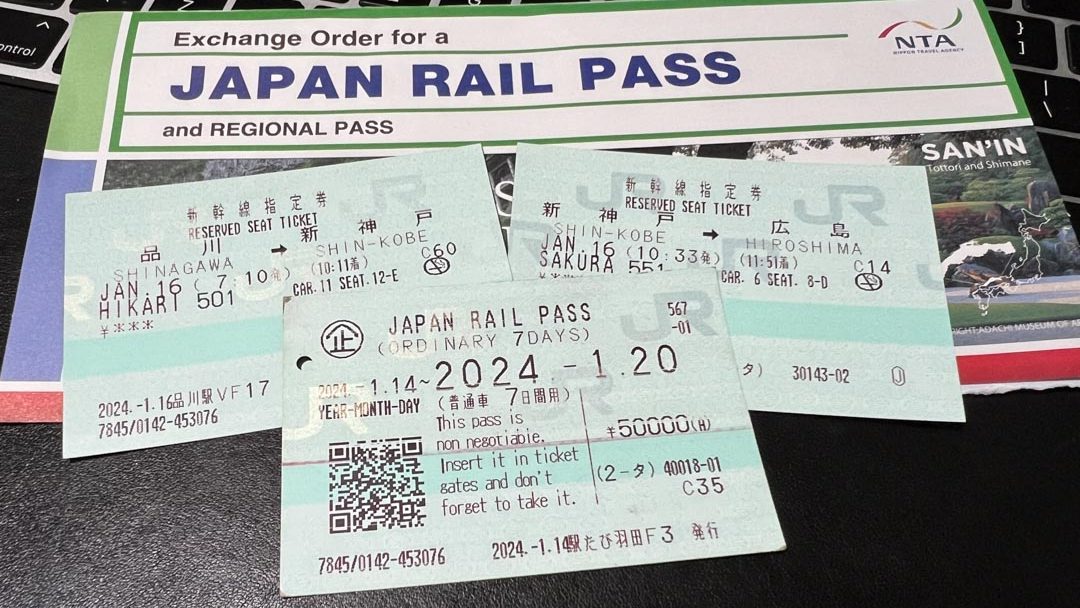
On Board The Bullet Train
The seat reservation was for a 7:10 am train and I was there at 6:30, so I didn’t bother waiting and got on the next available train, there were plenty of seats in the non-reserved carriages so I needn’t have worried too much.
Sitting on the E seat side of the train meant that I went past Mount Fuji as we went through Kanagawa, Shizuoka where I took lots of photos on Digital and also on film cameras as we sped along at over 300kmh. Everyone has asked me what the bullet train was like, and yes it is fast but it was a bit underwhelming. It was a train, and I was sat on them for four and a half hours each way.
Going through Hamamatsu and then arriving in Nagoya, we alighted to change to the Hikari 633 Shinkansen. They do look very strange and very aircraft like, but I suppose that is the streamlined nature of them. There is a single driver up front sat behind the bullet proof glass and a couple of them were ok with me making a photo of them sat there, although it was tricky to see through the dark, tinted windows.
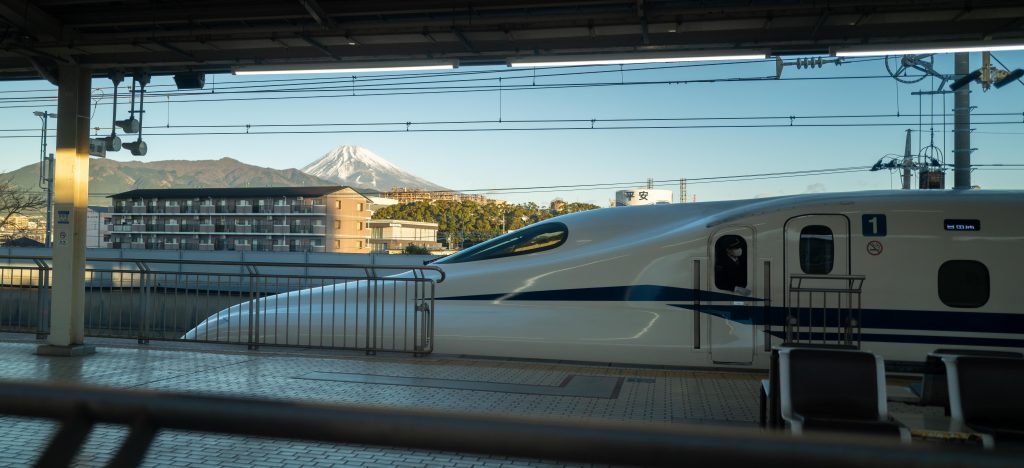
Past Kyoto and Okayama through some snow showers that covered the very rural landscape. There appear to be lots of farms around and many industrial areas which I enjoyed seeing some of the huge tower blocks in and their, slightly shorter than the Tokyo Tower, radio masts.
The trains were very quiet, people sat on their seats in the spacey carriage eating their breakfast or snacks before having a rest and listening quietly to their mp3 player or radio. The conductors as they go along the carriages bow before they come into a car and then turn and bow to everyone in the carriage just before leaving the car. It’s all very civilised, no litter, no loud music, no talking, at all. The seats were comfortable enough but my head seemed to stick up above the seat top as if to highlight that there was a foreigner in this particular seat. I was warm enough now that I had me case back and correct clothing choices.
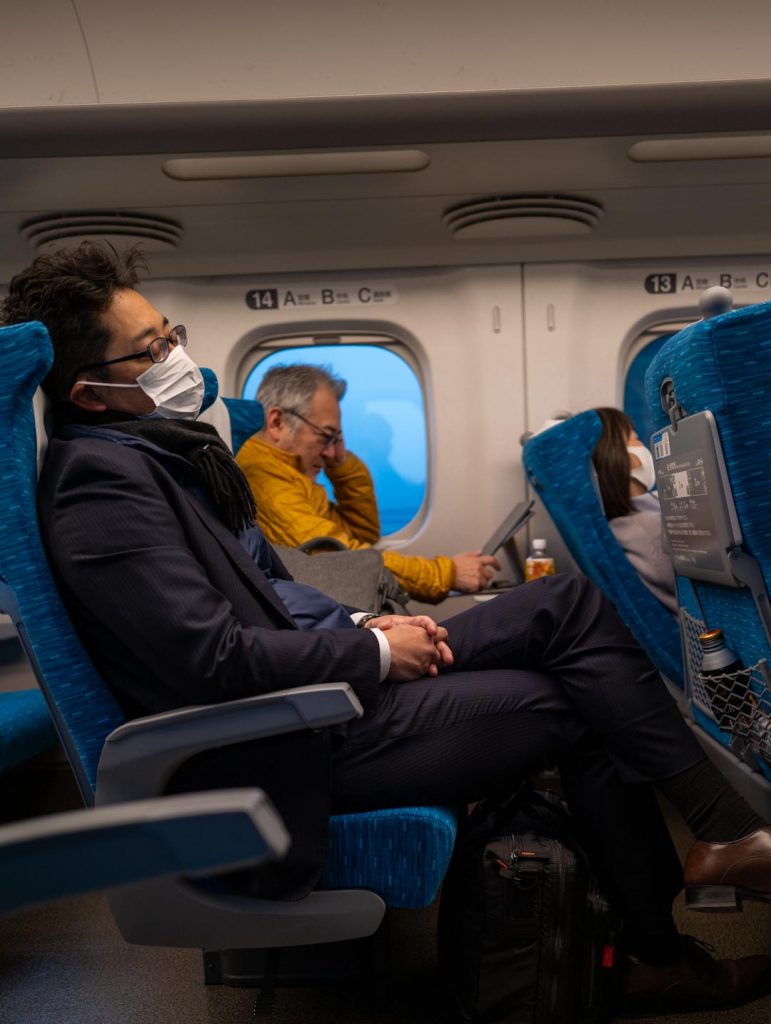
Atomic Destruction
We pulled into Hiroshima at 11:42 and dismounted the train before it left precisely on time for it’s next destination. I know I said it’s “just a train” but the fact that it runs to the minute and it’s neat and tidy with pristine carriages adds up to a lot. I followed the signs in the station to A-Bomb Dome as that’s where I wanted to go first. After watching Oppenheimer at the cinema last year I felt I needed to go and see where the historic event of World War II took place.

The Atomic Bomb Dome is an old building that housed the Hiroshima Prefecture Industrial Promotion hall, a city municipal building and after the first atomic bomb used against humans exploded over the city 600m away from this building on the 6th August 1945. It flattened an area of 2km squared and killed 200,000 Japanese people. The building was left standing in ruins and after the war it was decided to leave it and keep it as a memorial to the dead and the events of this attack that ultimately halted the war in the Pacific that extended after the Victory over Hitler’s Nazi regime in Europe.
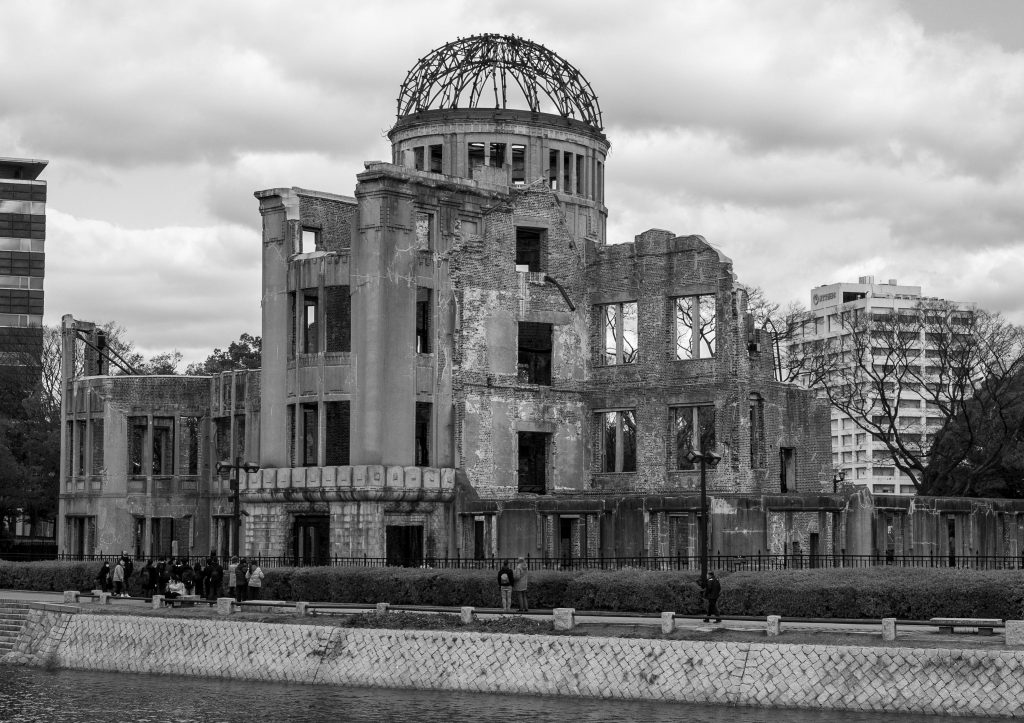
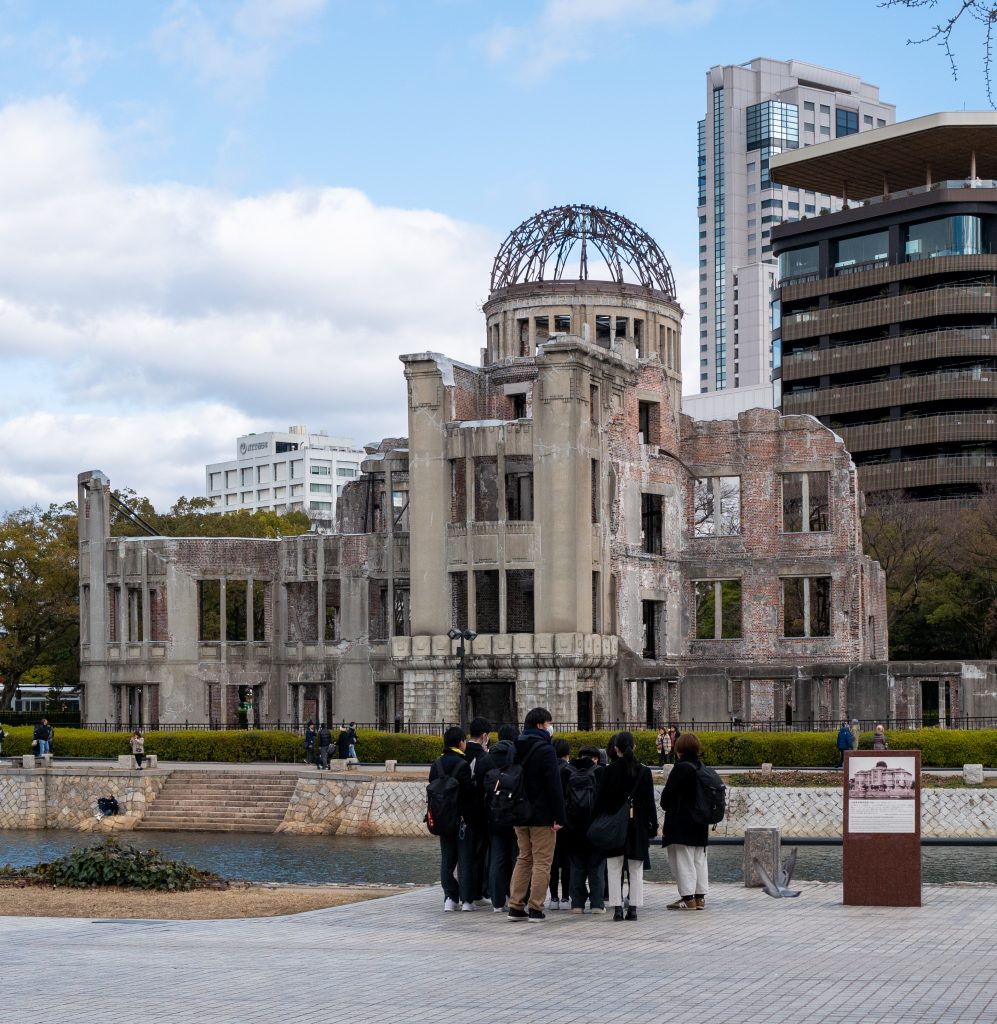
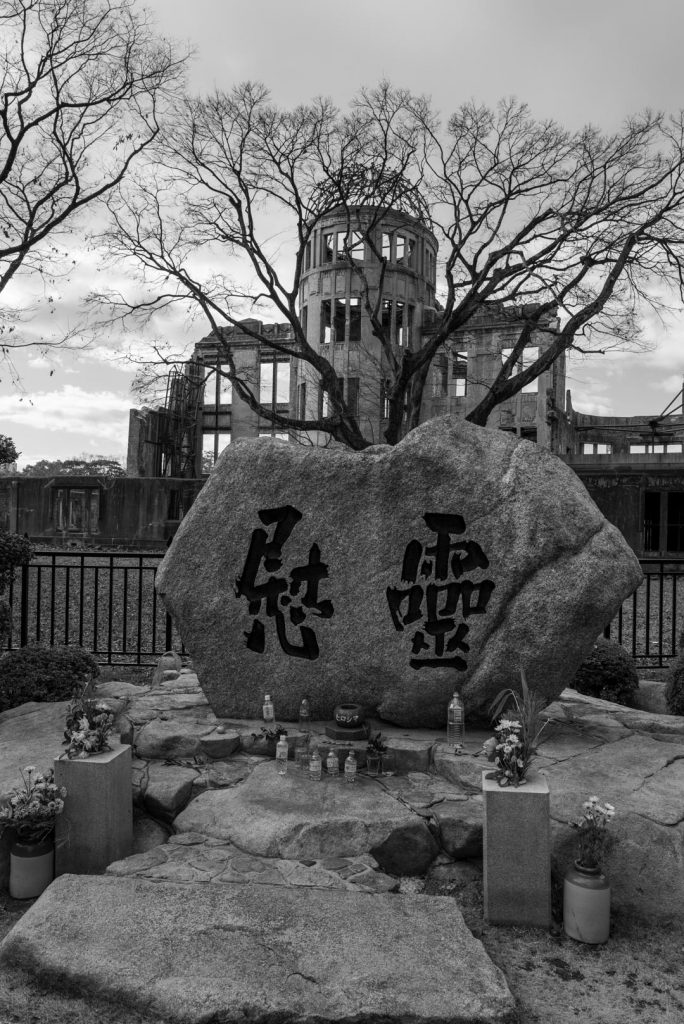
I wandered around the A Bomb Dome, and took many photos on my Leica Q2, Canon A1 35mm and Bronica ETRS 120 645 cameras as I felt this was an important and historic site. The sadness here was palpable and the plaques and notes around the site were emotional too. There is a shrine as you approach the building in its fenced off enclosure and there are many bottles of water that have been left there for the spirits of the dead. The water is thought to be a call back to the fact that the people of the city immediately after the bomb, were all desperate for water as their skin had burnt off so they were all getting in the river to help them cool down. Many of the Japanese people died in the river and it sounded absolutely horrendous.
The building itself wasn’t as large as I thought it might be, as I’d only ever seen it on screens or books. It’s a moving portrait of the results of the carnage, but has been restored many times over the years to help it retain it’s appearance and prevent it from crumbling away to nothing. The buildings that surround the dome are huge and dominate the skyline making it look even smaller. It’s particularly difficult to get a clean photo of the building without loads of other more modern architecture getting in the way.
After a good hour looking around the building I crossed the river to the Memorial Peace Park where the Peace Bell hangs and watched as other tourists and schoolkids took it in turns to slam the huge wooden log into the bell, making a deep ringing sound that had a very melancholic sound. Te school kids were obviously being taught about the events of the past and I wondered just what they were being told and how much they would be affected by what they were experiencing.
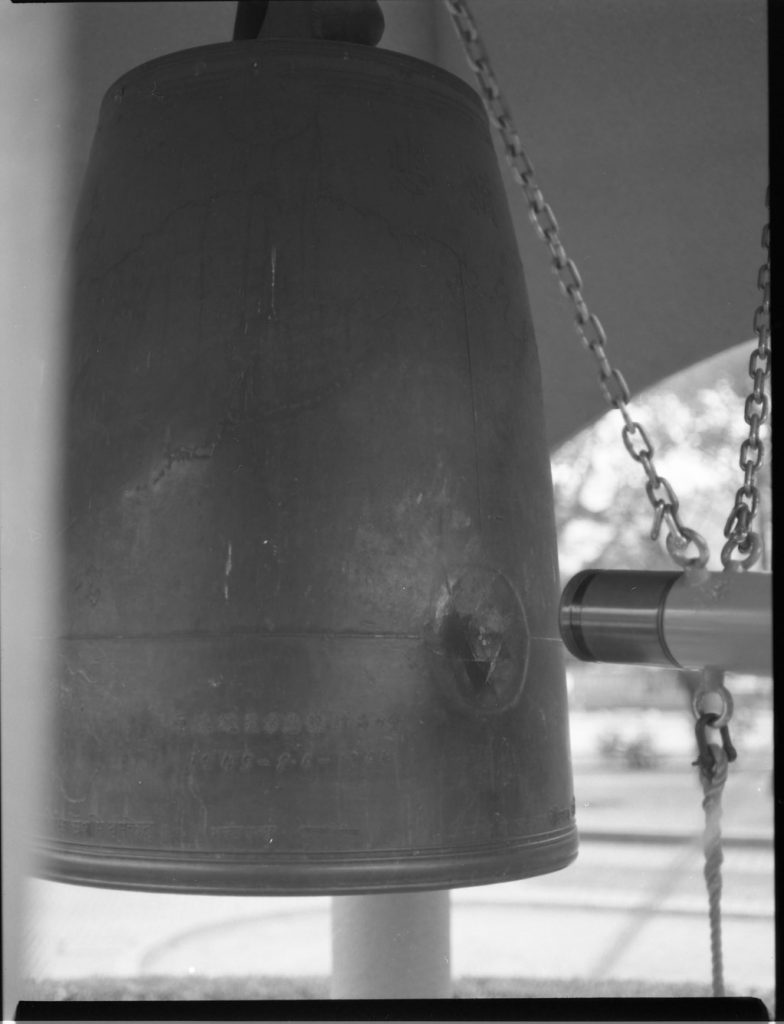
After a walk through the park here and taking a few photos from this side of the river I headed to the museum where I’d spend another hour looking around at the artifacts collected from people who’d lived and in some cases died during the events of the bomb and also after the war.
There is Pond Of Peace and a Flame of Peace at one end of the Memorial Park which when looked through frames the A Bomb Dome. It’s a poignant reminder of the devastation that arrived from the Enola Gay’s bomb bay.

Museum Visit
It was a bright and clear day with a cold wind biting through the clothes I was wearing and the sunlight was giving off some great shadows from buildings and people walking around. Up into the museum now, after dropping off all but my Leica Q2 into the lockers, I didn’t want to knock anything over etc. It was 200yen to enter the museum which is £1.06.

Upon entering the museum we are initially greeted by images of how the area used to appear before the fateful day and then photos of the kids and other people who would later on be suffering from the effects of conflict. Reminders of the damage to the area were then shown on huge wall size images and a number of 145,000 people had died before the end of 1945 due to the bomb,. Many more died in the few years after and throughout the intervening time, whether from effects of the attack or natural causes.
Some large photos by photographer Yoshito Matsushige show people in the hours after the bomb exploded and the effects of extreme heat and radiation. His quote is particularly horrifying.
“Their hair was scorched and frizzy, Their faces, arms, backs, legs – their whole bodies were badly burnt. Blisters had burst and sheets of burnt skin hung off them like rags. The cene through my viewfinder was blurred by tears that streamed down my cheeks. This was hell.”
Yoshito Matsushige

It shows that photographers and photo jpurnalists do have a job to do, even in the worst of times, and whilst it may come across as distasteful, I think it’s important that images like these and worse are captured to be shared in the future.
Art is an important part of the exhibitions and there are photographs, paintings, writings and poetry from people that were there and capture som eof the most terrifying things anyone could live through. There is a warning before you enter, with small kids especially, and it’s needed as some of the images are gruesome.

Artefacts like the step where a human’s shadow was burnt into the stone from the massive flash of the explosion, faded stoneworks and buckled bikes are all on display to fully illustrate the power and the ferocity of the explosion and the firestorm that followed.
There are multiple other exhibits which show personal effects of kids who were working on building sites the day of the attack, and how they were found by parents or relatives without any sign of their children, it truly is heartbreaking and a reminder about the horrors of war. How can people do this to each other is an obvious question that springs to mind as you walk around the dark rooms.
The museum is well done, very respectful and tasteful in most cases and I found it to be moving and bring home the truth about the things we see on TV or the cinema screens. I’d recommend it as a place to go, just to fully understand what happened there in 1945.
More Concrete
After exiting the museum, I picked up my bag from the locker and headed out to take photos of the concrete structure that houses the museum and buildings. There are a lot of angles where the sun creates some wonderful lines and shadows and I wanted to capture them on digital and film so I spent another hour or so here.
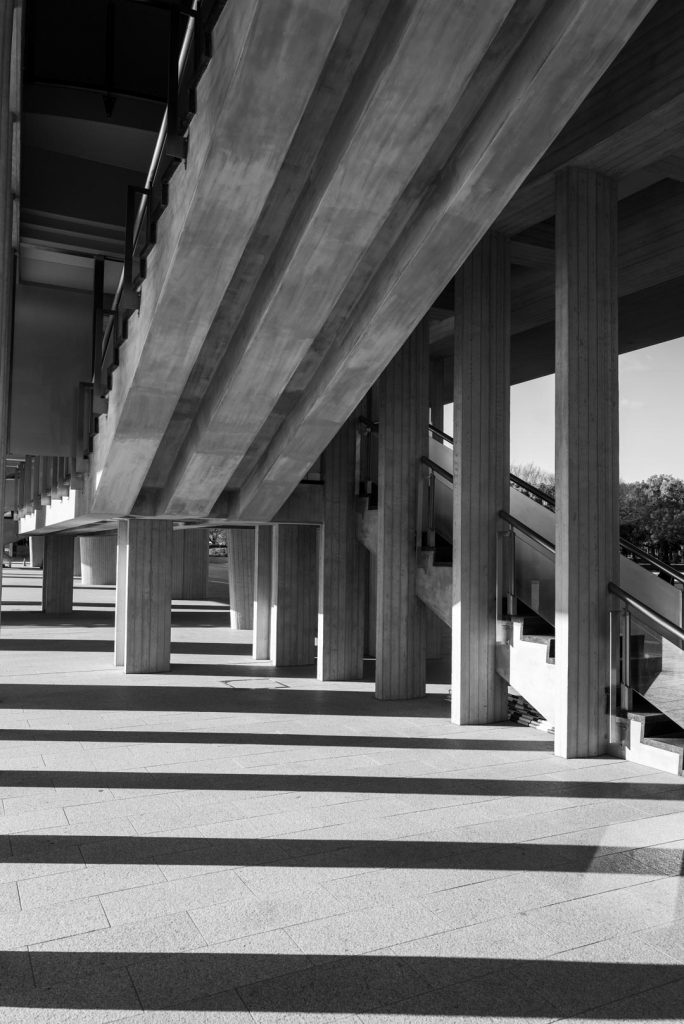
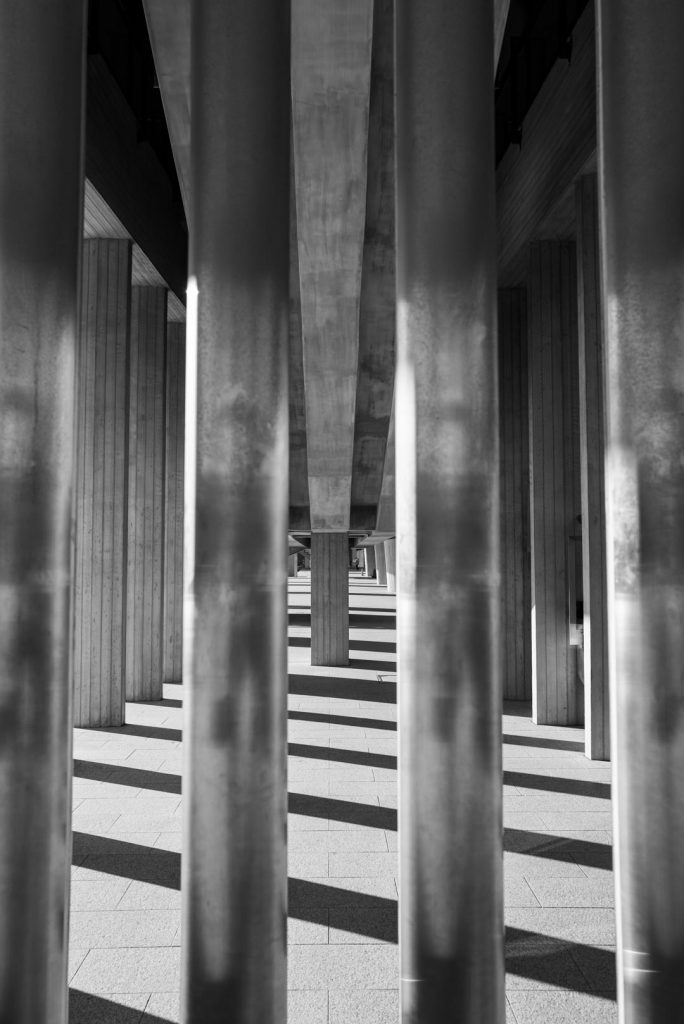
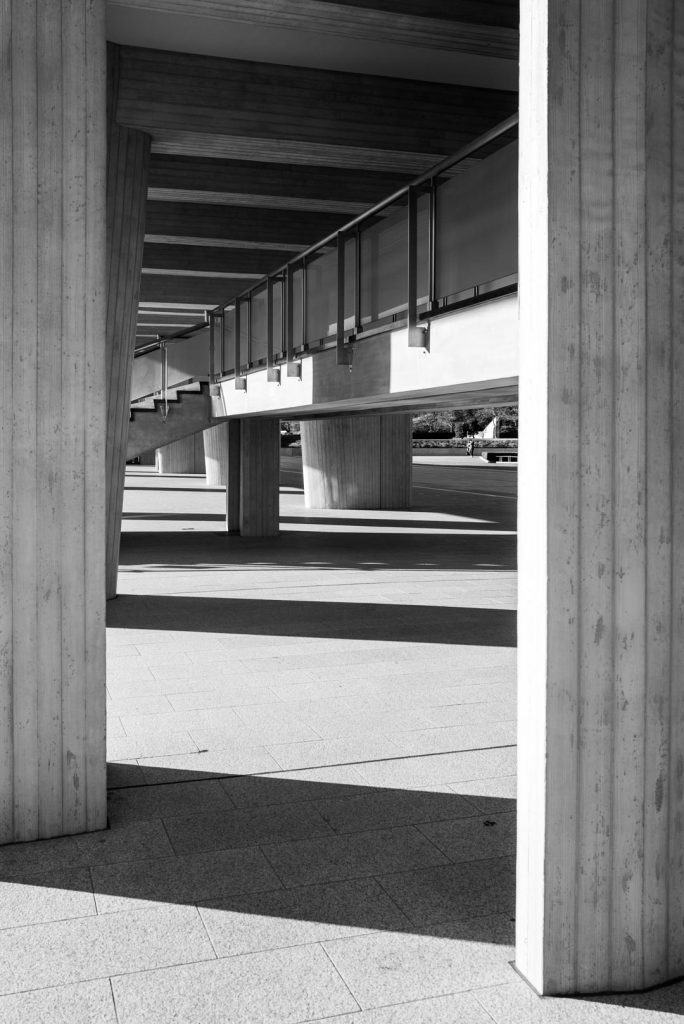
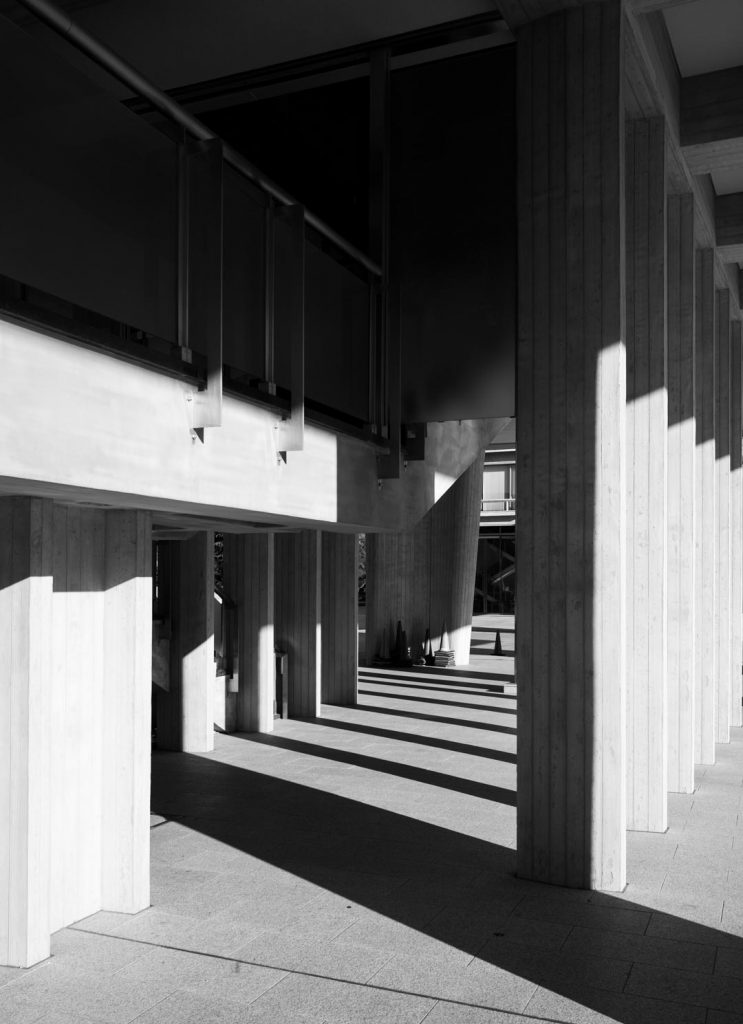
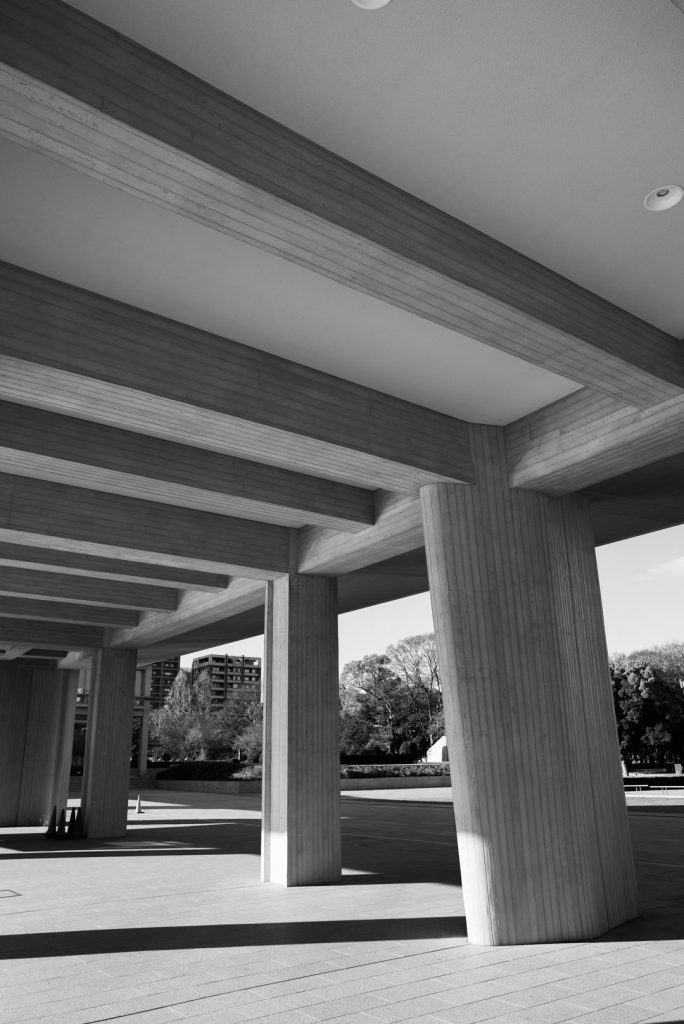
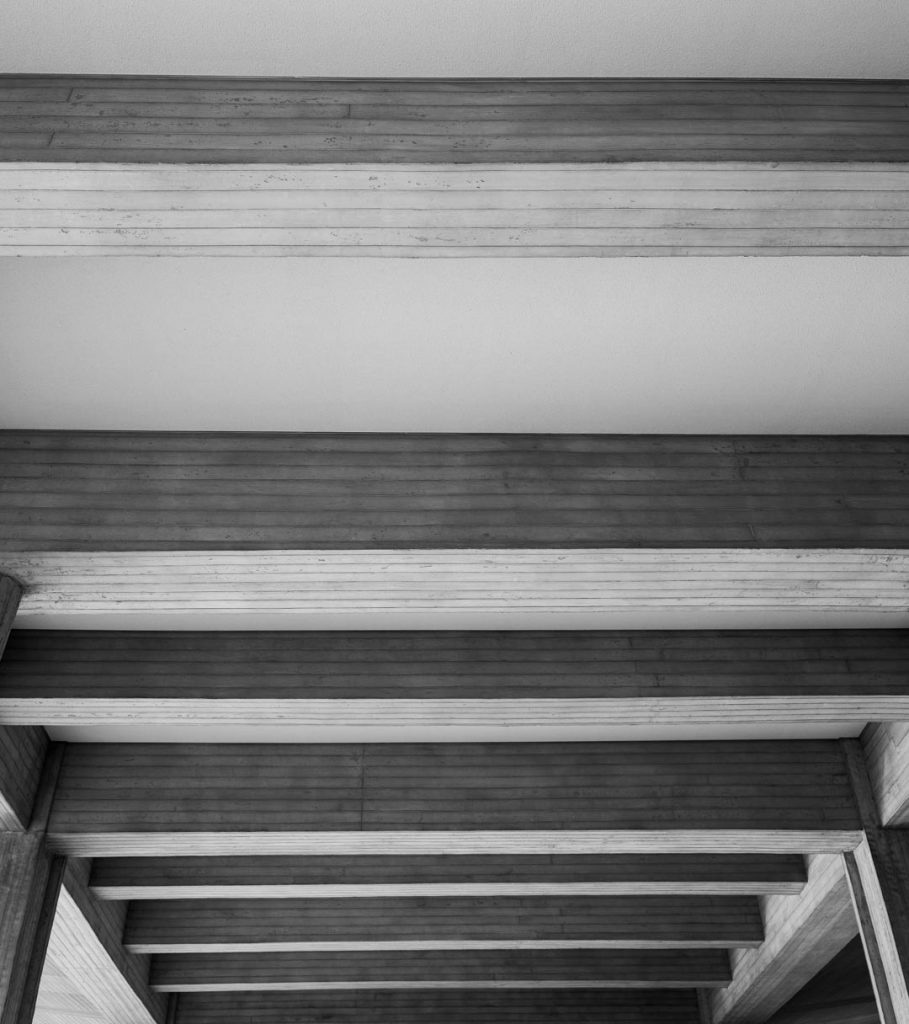





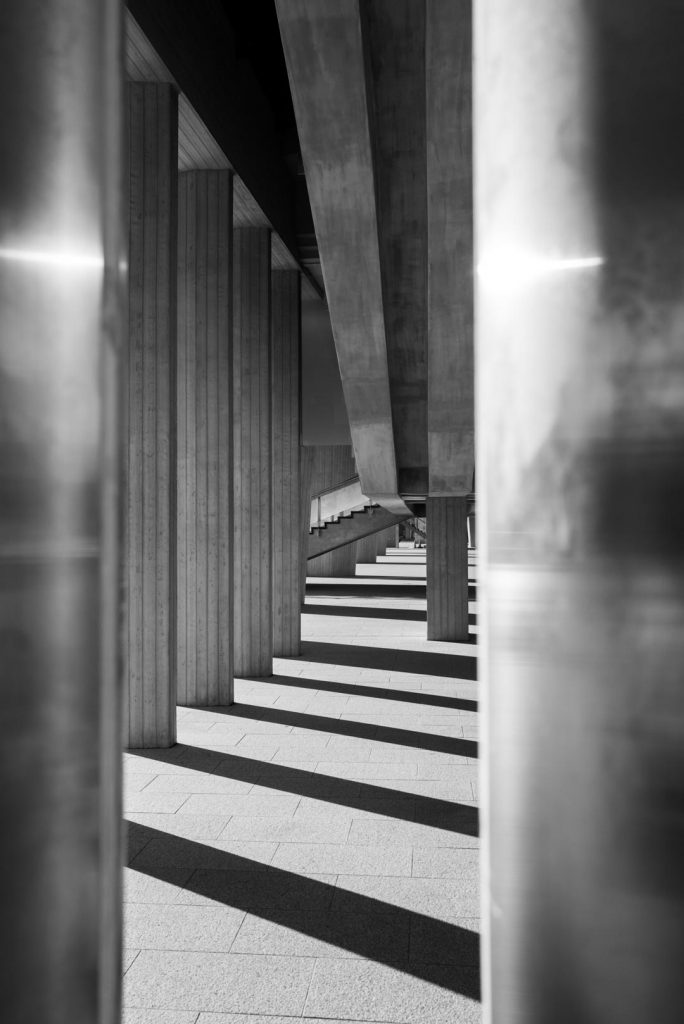
After the time here photographing the area I decided to head back to the station as I didn’t want to get stuck somewhere in Japan with the trains all stopped. It was going to be another 4.5 hours to get back so didn’t want to leave it too late. It took me ages to get back to the station in Hiroshima as I entered one subway under the road, ended up in a huge underground shopping mall and exited further away from the station than I’d gone in. Doh.
As I neared the A Bomb Dome again I noticed an elderly man, his daughter and a stray cat so I stopped to take the cat’s photo. The older gent said something in Japanese into his phone and it translated it as he held it out to me. “Hello and welcome to Hiroshima” he had said. I briefly explained that I thanked him, “arigatou gozaimasu” and explained that I was from England, after which I said farewell and headed off. it really is a polite country, and people look like they want to speak to foreigners in some cases.

Back To Shinjuku
Once back at the station I returned to the Shinkansen platforms and boarded the Kodama SuperExpress 701 to Nagoya as explained by Google Maps. It appeared that there were fewer stops on this train so I was happier that we’d be back quicker.
Once it started moving however, Ia tannoy announcement was read out that said which train we were on and that this wasn’t covered by the JR Pass, which I was using. In actual fact as it is a faster train I should have paid an extra £15 for the upgrade. I din’t know this when I boarded the train and the conductor didn’t come and ask me so i kept quiet and had my head lookign out of the window at the countryside flashing by, until it went dark. I never slept on the train but on the way back towards Tokyo, the train filled up and there were four older women behind me who were chatting about their shopping trip, all the while being sneered at by the other passengers in the carriage.
I arrived back in Shinjuku at around 10pm and had a wander around with the camera before the batteries died and I returned to the hotel for a bath and then bed. It was going to be another busy day tomorrow, with a. visit to teamlab Planet so I needed to try and get some sleep. I did have to hit up my airpods and get some Kraftwerk going in my ears to block out the sounds of the nighttime economy 21 floors beneath my window.
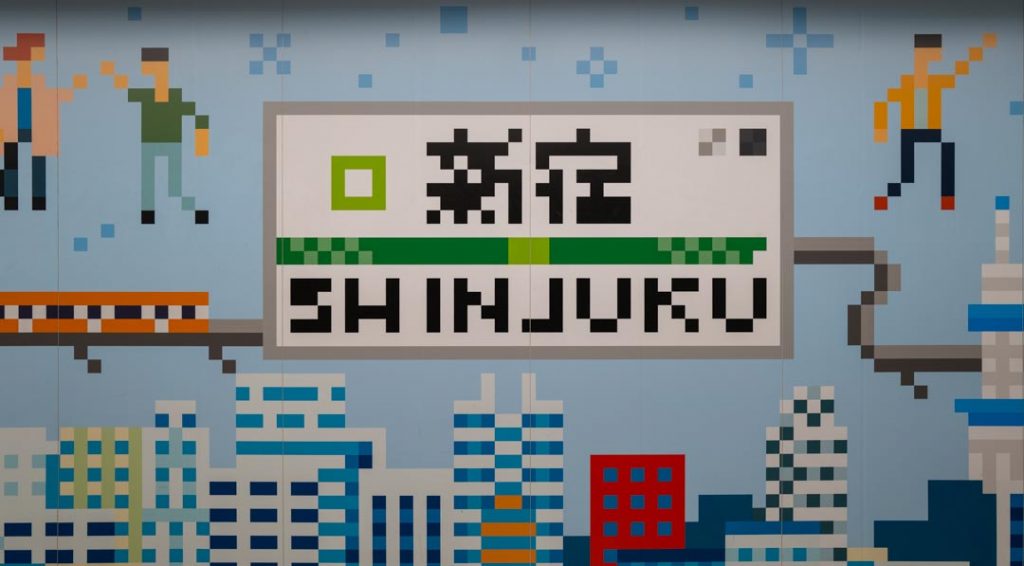
Conclusion
Overall I would recommend the trip to Hiroshima if you’re interested in history or history of warfare etc. The city is lovely and the people seem really friendly, there are many shops but I kept clear of them really as I wasn’t there for that really. The museum is a bargain and such an education, it would be good to show all secondary school kids the artefacts in the collection to educate them to the risks of warfare and conflict.
The bullet train was reliable, fast and comfortable and a feat of modern design and engineering but really just a train. The views of Mount Fuji were well worth the train ride too. The JR Pass that I’ve mentioned came in at £300 but each journey to and from Hiroshima would have cost £140 each and I can then use it on the other JR Lines routes, meaning my SUICA pass (like a London Oyster card) on my iPhone kept more of its funds for other non-JR Lines journeys.
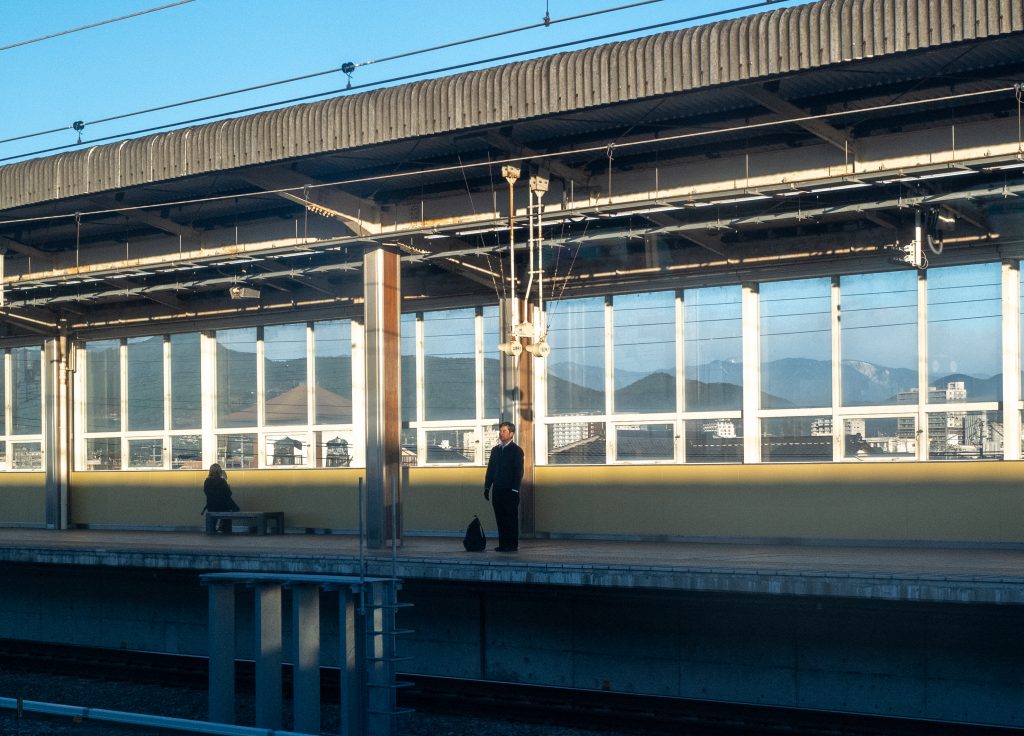
Be First to Comment